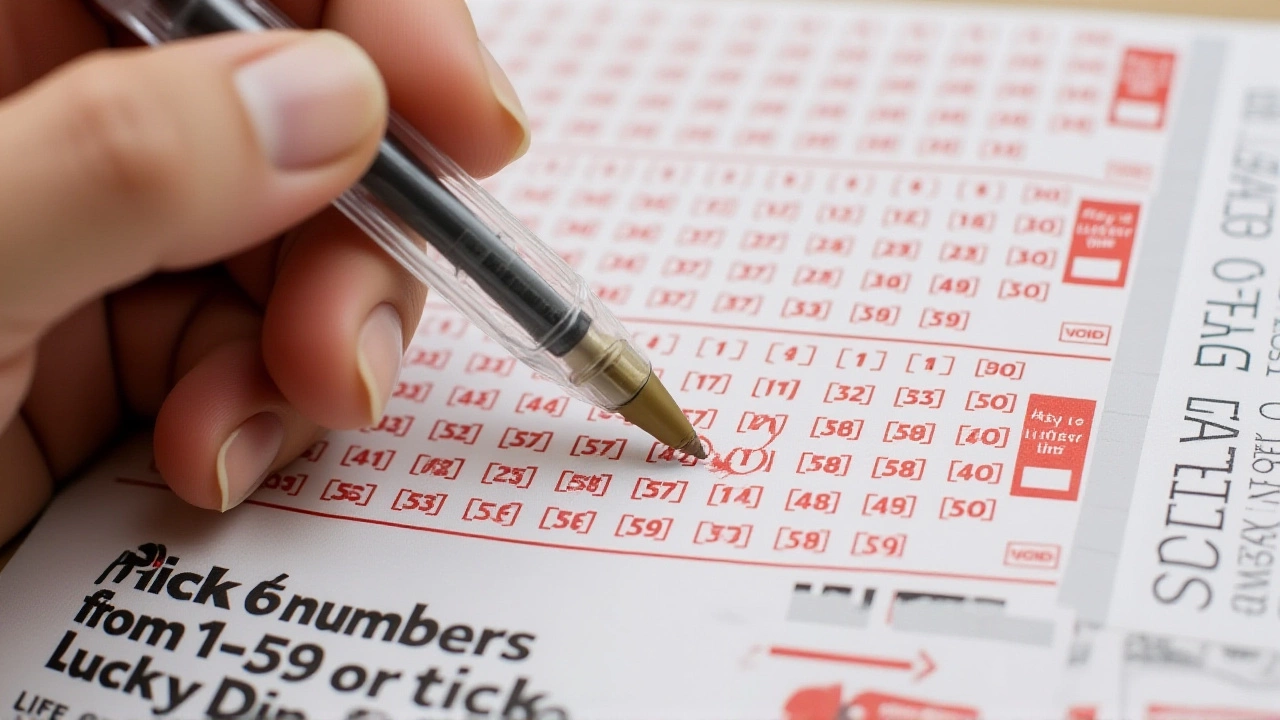On Saturday evening, November 15, 2025, millions of Britons watching the National Lottery Lotto draw were left staring at a frozen screen as the bonus ball refused to drop — halting the entire process mid-broadcast from the Watford studio. The glitch, which occurred during a rollover draw estimated to be worth over £20 million, sent shockwaves through the lottery community. Viewers tuning in via BBC One or the National Lottery YouTube channel watched in confusion as the live feed cut to black just seconds after the main balls were drawn. No one knew if the jackpot would roll again — or if someone, somewhere, had already won.
What Went Wrong in Watford?
The Allwyn Entertainment UK Limited team, now operating the National Lottery since February 1, 2024, confirmed the issue was mechanical: the bonus ball, the final and often most anticipated number, simply didn’t release from the draw machine. "It’s not yet clear what caused the earlier glitch," said a company spokesperson in a brief statement released at 7:47 p.m. That was 12 minutes after the scheduled 7:35 p.m. draw time. The broadcast was pulled, the YouTube stream went offline, and social media lit up with memes, frustration, and conspiracy theories.What made this especially jarring was the context. For 29 years and two months, Camelot Group plc had run the lottery from the same Watford facility — never once experiencing a televised draw failure. Now, under Allwyn Entertainment UK Limited, the first major disruption has occurred. And it happened on a rollover — the kind of draw that turns ordinary people into instant millionaires.
How They Fixed It — and Why It Mattered
By 9:12 p.m., Allwyn Entertainment UK Limited announced the draw had been resumed using a backup machine, overseen by an independent adjudicator as required by UK Gambling Commission rules. The winning numbers — 07, 18, 23, 34, 41, 49, with a bonus ball of 12 — were posted on national-lottery.co.uk at 9:28 p.m., exactly 1 hour and 53 minutes after the original start time.What’s remarkable is that the fix didn’t involve a new location, a new machine supplier, or even a new team. The same studio, same staff, same location — Watford — just a different draw machine. That’s a sign of operational continuity, but also a reminder that legacy systems, even when well-maintained, can still fail under pressure.

Who’s Running the Lottery Now?
Allwyn Entertainment UK Limited is the UK subsidiary of Allwyn Entertainment, a Prague-based company wholly owned by Czech billionaire Karel Komárek. His conglomerate, Komárek Group (KKCG), made €2.1 billion in revenue last year, mostly from energy and oil. This isn’t a charity. It’s a global business with a £7 billion-a-year UK licence.When the UK Gambling Commission rejected Camelot’s bid for renewal in 2023, many assumed it was about underperformance. But the real story was about cost efficiency. Allwyn promised lower overhead, digital innovation, and more funds for good causes. So far, the numbers check out — but this glitch raises questions about reliability. Was the transition rushed? Were the machines properly stress-tested?
Why This Isn’t Just a Technical Glitch
Lotteries aren’t just about winning. They’re about trust. People buy tickets with the quiet belief that the system is fair, transparent, and bulletproof. When a bonus ball doesn’t drop, that belief wobbles — even if the fix is swift.Compare this to the 2019 New York Lotto draw, where a software error caused a duplicate number to appear. That was fixed within 20 minutes. Or the 2021 Irish Lottery incident, where a machine failed to spin properly — the draw was postponed to the next day. In both cases, regulators issued public statements. Here? Silence from the UK Gambling Commission. No apology. No review. Just a post on a website.
And yet, no one got paid out early. No tickets were invalidated. No compensation offered. That’s legally correct — but emotionally cold. For the 20 million people who buy a ticket every week, this wasn’t just a delay. It was a moment of collective anxiety.

What’s Next?
The next draw is scheduled for Wednesday, November 19, 2025 — just four days away. Allwyn says it’s "reviewing procedures" and "enhancing redundancy." But what does that mean? Are they replacing machines? Adding real-time diagnostics? Training staff to handle live failures?One thing’s certain: Camelot’s 30-year run of flawless broadcasts will be remembered as a golden age of lottery reliability. Allwyn has a decade to prove it can match — or exceed — that standard. One glitch doesn’t break a brand. But repeated ones? That’s how trust evaporates.
Frequently Asked Questions
Did anyone win the jackpot on November 15, 2025?
No, the jackpot was not won on November 15, 2025. The draw was completed later that evening with the numbers 07, 18, 23, 34, 41, 49 and bonus ball 12. No ticket matched all six main numbers, so the prize rolled over to the next draw on Wednesday, November 19, 2025. The jackpot amount was not officially disclosed, but estimates from ticket sales suggest it exceeded £20 million.
Why did the bonus ball fail to drop?
The exact cause remains undetermined. Allwyn Entertainment UK Limited confirmed it was a mechanical failure in the draw machine, but has not released technical details. Experts speculate it could be a sensor malfunction, air pressure issue, or debris in the mechanism — all common in mechanical ball-drawing systems. The fact that a backup machine was used successfully suggests the problem was isolated to one unit, not systemic.
Is the National Lottery still safe to play?
Yes. The draw was completed under independent adjudication, and results were published on the official site, national-lottery.co.uk — the only verified source. The UK Gambling Commission has not suspended operations or raised concerns. While the glitch was alarming, it was resolved within two hours, and no evidence suggests fraud or manipulation. The system’s integrity remains intact.
How is Allwyn different from Camelot?
Camelot operated the lottery for 30 years with a focus on tradition and televised draws. Allwyn, owned by Czech billionaire Karel Komárek, is a tech-driven operator focused on digital sales and cost efficiency. While Camelot’s Watford studio was a media spectacle, Allwyn’s priority is reliability at scale. This glitch may be a growing pain — but it’s also a test of whether a global corporation can handle the emotional weight of a national institution.
Will the next draw be delayed too?
Allwyn has stated it’s implementing additional safeguards, including real-time monitoring of draw machines and pre-draw diagnostics. The next draw on Wednesday, November 19, 2025, will use the same Watford studio but with at least two backup machines ready. No public statement confirms whether the faulty machine has been replaced — but insiders say repairs are underway. Expect a smoother broadcast.
Why didn’t the UK Gambling Commission comment?
The UK Gambling Commission typically only issues public statements when regulatory breaches are suspected. Since the draw was completed under supervision and results were verified, no violation occurred. However, critics argue the lack of transparency fuels public doubt. The Commission has not announced any review, despite the incident being the first major failure under Allwyn’s tenure — and the first televised draw halt in the lottery’s 31-year history.



